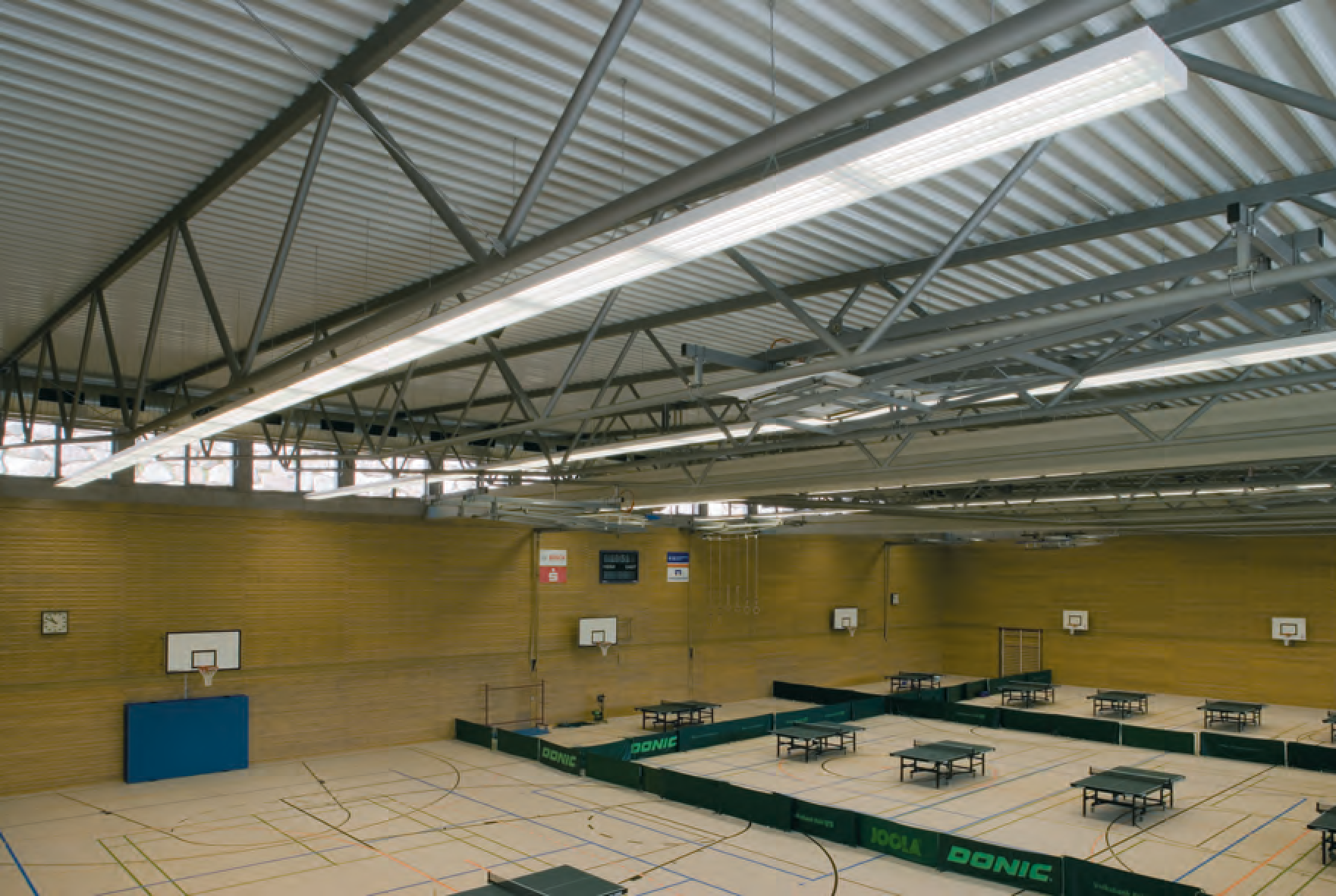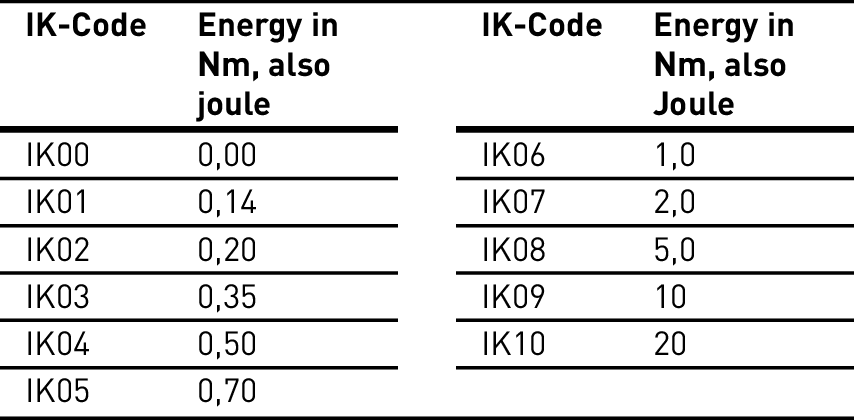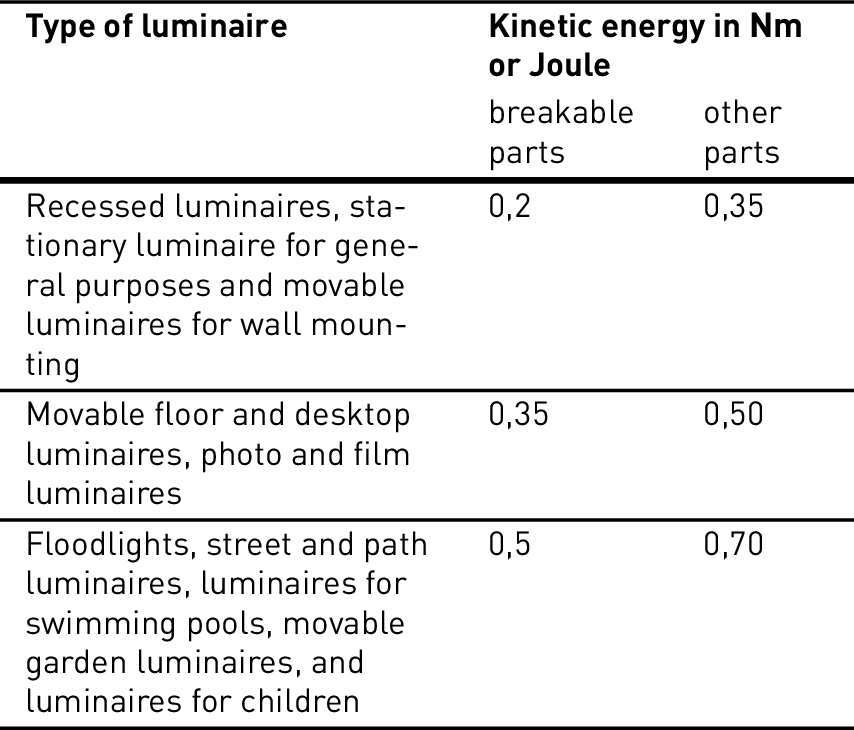
Mechanical safety

Luminaires must feature sufficient resistance to expected mechanical stress in intended use. This entails the distinct properties of impact resistance as well as shock resistance of a luminaire. The former refers to impact energy affecting the luminaire. The latter refers to shocks to the installation surface of the luminaire, meaning an acceleration of the luminaire.
For special luminaires intended for rough operation (e.g. luminaires on building sites and in workshops or for installation under bridges or on stands) shock resistance is tested and documented according to DIN EN 60068-2-27:2010-02. These luminaires also must feature a minimum protection rating of IP54 and pass advanced mechanical tests, e.g. drop tests. For impact resistance, generally binding tests are mandatory.
Luminaire regulation EN 60598-1:2015-10 demands unaltered electrical safety after an impact test with a standardised impact test device. Three blows with an impact energy according to table are exerted on the weakest area of fragile and other components. The impact energy values correspond to standard EN 60068-2-75:2015-08 "Environmental testing – Hammer tests" (identical to IEC 60068-2-75).

Table 3.150: Impact energy for mechanical safety testing of luminaires according to EN 60598-1
In particular applications, higher requirements might apply in terms of stability. This is the case e.g. for sports hall luminaires.
European standard EN 50102 "Degrees of protection provided by enclosures for electrical equipment against external mechanical impacts (IK code)" introduces an IK code analogous to the IP code regarding the ingress of solid and liquid substances (see chapter "Protection ratings") for the impact resistance of electrical equipment, which has e.g. been adapted as a national standard in the form of French standard NF EN 50102 (table).

Table 3.151: IK code and corresponding impact energy according to EN 50102